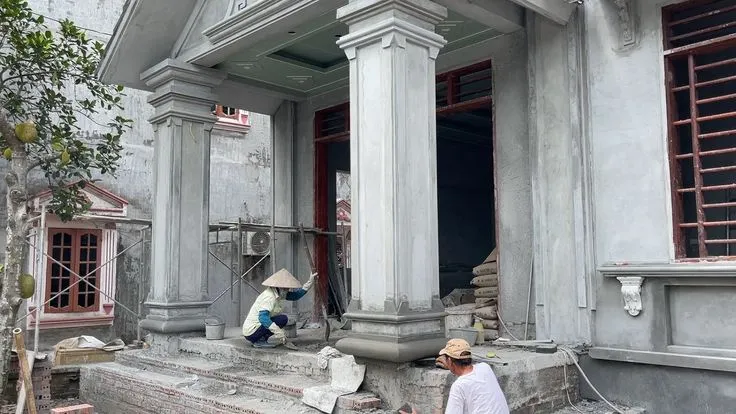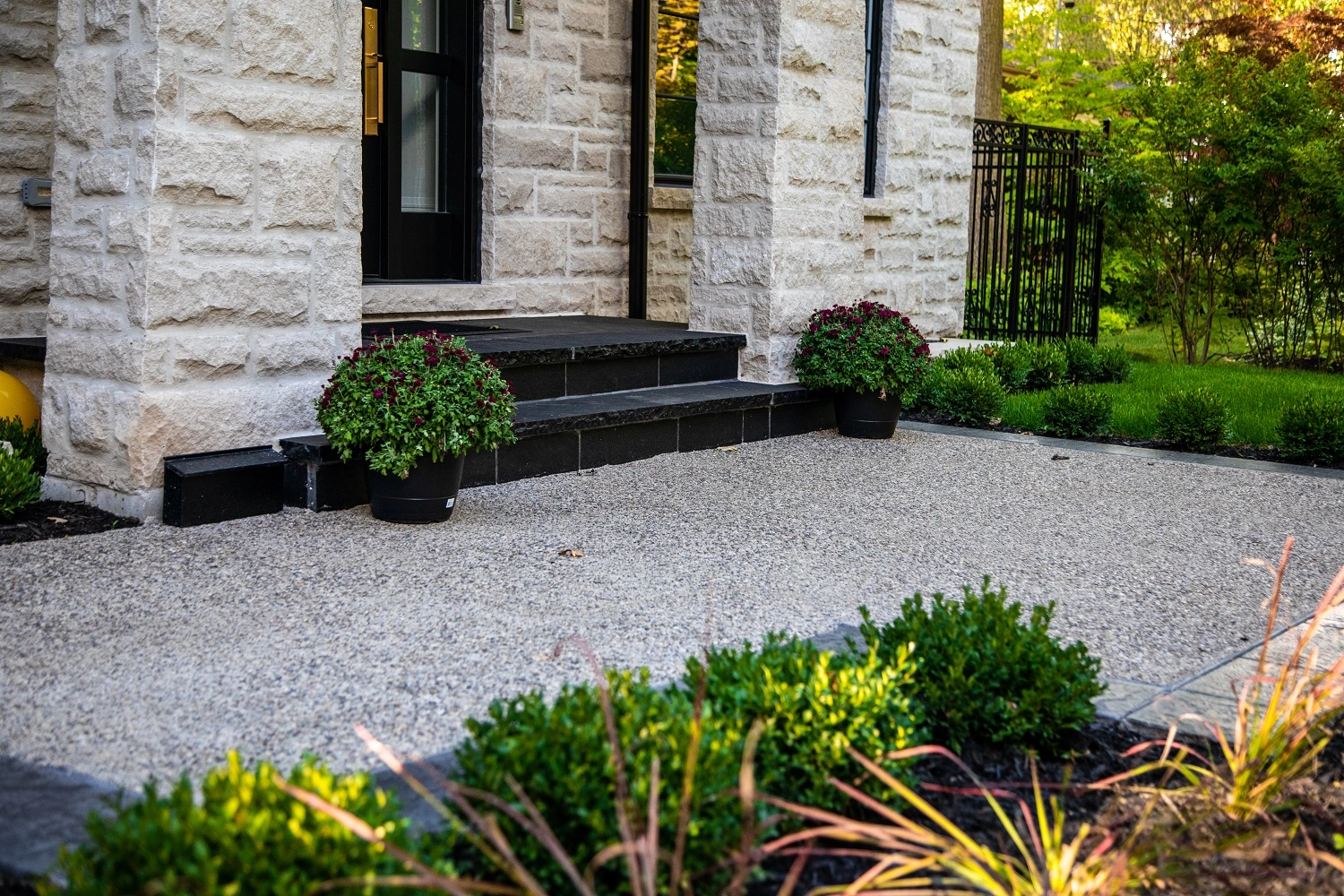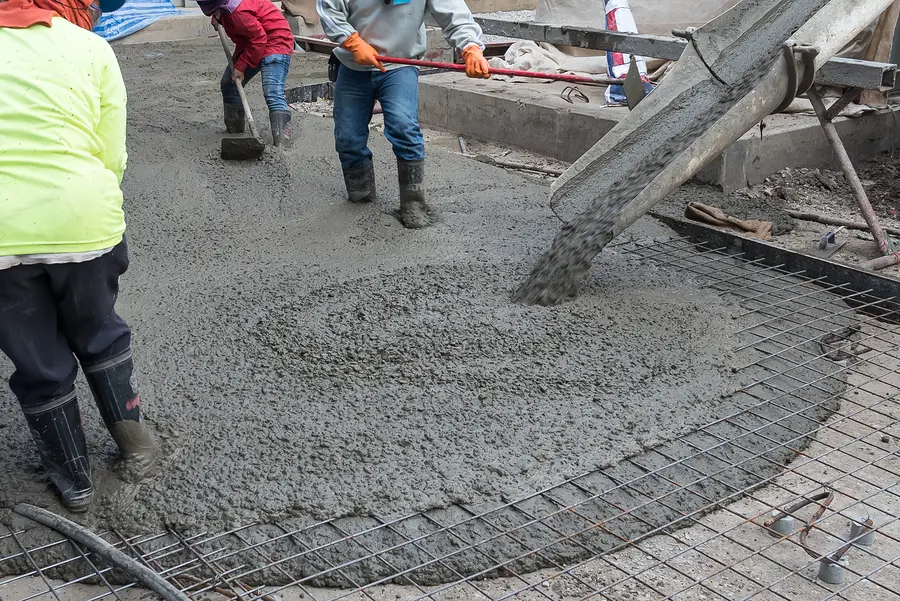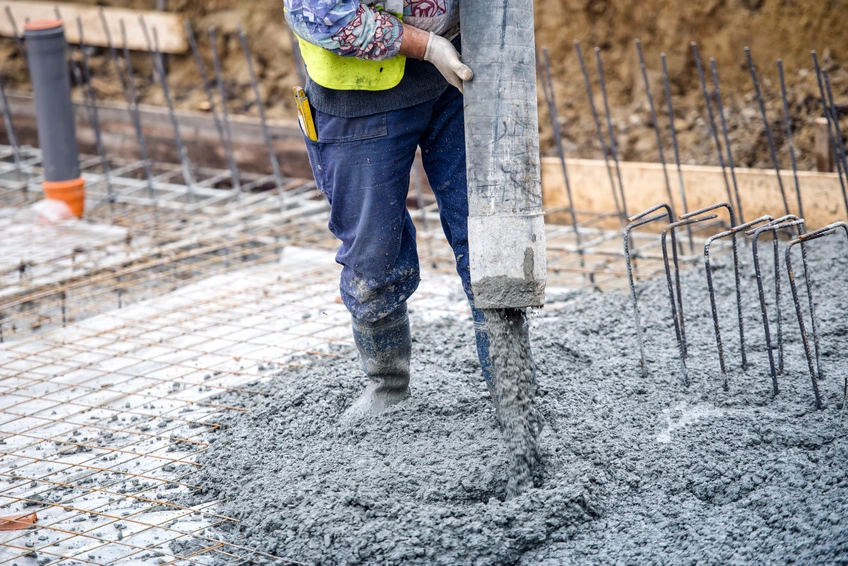Stamped Concrete Patterns: Adding Style to Your Space
Stamped concrete is a decorative method that adds texture and patterns to concrete surfaces, mimicking natural materials such as brick, stone, or wood. This technique involves pressing molds or stamps into freshly poured concrete before it sets, resulting in a unique and aesthetically pleasing finish.
Patterns are crucial in stamped concrete, giving the surface a distinctive look. Contractors can create various effects using stamps and patterns, from rustic cobblestone to modern geometric designs. These patterns enhance the concrete's visual appeal and add texture, making the surface more slip-resistant and durable.
This guide gives homeowners and contractors a comprehensive overview of stamped concrete, including its benefits, design options, and maintenance requirements. Whether you want to use stamped concrete for a new patio, driveway, or pool deck, this guide will help you understand the process and make informed decisions regarding your project.
Stamped concrete patterns have several advantages for both residential and commercial applications. One significant benefit is its durability and lifespan. When properly built and maintained, stamped concrete can survive for many years, making it a long-term, cost-effective option.
Stamped concrete is durable and less expensive than brick or stone. Stamping concrete involves pouring concrete into a desired pattern and then applying a stamp to create the desired texture. This method is often more affordable than traditional materials while achieving a similar aesthetic.
Another advantage of stamped concrete is its design flexibility. Stamped concrete, which comes in various shapes and colors, can simulate the appearance of more expensive materials such as brick, slate, or wood. This mobility gives you greater creative freedom when constructing distinctive and individualized settings.
Overall, stamped concrete patterns are a durable, cost-effective, and versatile option for various projects. Whether used for driveways, patios, or walkways, stamped concrete can enhance the appearance of any space while offering long-lasting performance.

Stamped concrete offers various patterns, allowing homeowners and designers to achieve the look of more expensive materials at a fraction of the cost. Here are some popular stamped concrete patterns:
1. Cobblestone: Cobblestone patterns give a classic, rustic look reminiscent of old-world charm. This pattern is popular for driveways, walkways, and patios.
2. Brick: Brick patterns offer a traditional and timeless appearance. They are often used for sidewalks, pathways, and interior flooring to create a warm and inviting atmosphere.
3. Slate: Slate patterns mimic the look of natural stone, providing a sophisticated and elegant feel. This versatile pattern can be used in various outdoor and indoor settings.
4. Wood: Wood patterns replicate wood's natural grain and texture, providing a warm and rustic look. This pattern is famous for decks, patios, and pool surrounds.
5. Flagstone: Flagstone patterns resemble natural flagstone, offering a rugged and irregular look. This pattern is ideal for adding a natural element to outdoor spaces like patios and pathways.
In conclusion, stamped concrete patterns offer a cost-effective and versatile solution for achieving the desired aesthetic in residential and commercial projects. Whether you prefer cobblestone's classic look or wood's rustic charm, a stamped concrete pattern suits every style and budget.
When selecting a stamped concrete pattern for your project, numerous aspects must be considered to get the most outstanding results. These factors include:
1. Architectural style of the property: The architectural style of your property should complement the stamped concrete pattern you choose. For example, a modern home may look best with a sleek and straightforward pattern, while a rustic home may benefit from a more textured pattern like cobblestone or slate.
2. Surrounding landscape: Consider the existing landscape around your property. The stamped concrete pattern should complement the surrounding environment, increasing the aesthetic appeal.
3. Desired aesthetic effect: Think about the look and feel you want to achieve with stamped concrete. Different patterns can provide a variety of visual impacts, so select one that matches your aesthetic tastes.
4. Maintenance requirements: Some stamped concrete patterns may require more maintenance. When selecting a pattern, consider your ability to keep the stamped concrete looking excellent over time.
Before selecting a stamped concrete design, consider these aspects to guarantee that your project matches your aesthetic tastes, complements your property's architectural style, blends well with the surrounding landscape, and is easy to maintain.
The installation process for stamped concrete involves several vital steps to ensure a successful outcome:
1. Preparation of the area: The area where the stamped concrete will be installed is prepared by clearing any vegetation, debris, or existing concrete. The ground is then leveled and compacted to create a stable base for the new concrete.
2. Mixing and pouring of the concrete: The concrete is mixed according to the manufacturer's instructions once the area is prepared. The mixed concrete is then poured onto the prepared area and spread evenly using tools such as screeds and floats.
3. Stamping the pattern: After pouring the concrete, a stamping tool creates the desired pattern. Stamping is often done when the concrete is still wet and flexible. The stamp is pressed into the concrete to create the texture and design of the chosen pattern.
4. Curing and sealing: Once the stamped concrete has been installed, it must be adequately cured to achieve maximum strength and durability. Curing timeframes vary according to weather conditions and the type of concrete utilized. Once the concrete has set, a sealer is applied to protect it from stains, water damage, and UV rays.
By following these steps, stamped concrete can be installed correctly to create a beautiful and durable surface for various applications.
Proper maintenance is vital to keeping stamped concrete looking its best for years. Here are some essential maintenance tips:
1. Regularly clean the stamped concrete surface with a sweep or leaf blower. Wash the surface periodically with a moderate detergent and water to eliminate dirt and stains. Avoid harsh chemicals and abrasive cleaning, as they might damage the sealer and the concrete.
2. Sealing every few years: Stamped concrete should be resealed every few years to maintain its appearance and protect it from the elements. Before resealing, clean the surface thoroughly and allow it to dry completely. Follow the manufacturer's instructions to apply a high-quality concrete sealer using a sprayer or roller.
3. Repairing cracks or damage promptly: Inspect the stamped concrete regularly for any cracks or damage. Promptly repair cracks using a concrete repair kit or fill them with a concrete patching compound. For more extensive repairs, it may be necessary to hire a professional contractor.
By following these maintenance guidelines, you can help keep your stamped concrete in good shape and continue to enhance the attractiveness of your home or property.
Stamped concrete is a versatile option for enhancing the appearance of various outdoor spaces. Here's how it can be used in different areas:
1. Patios: Stamped concrete is popular for patios due to its durability and aesthetic appeal. It simulates the appearance of expensive materials like brick, stone, or slate, creating a sophisticated and inviting outdoor living space. Stamped concrete requires low maintenance, making it ideal for busy homes.
2. Driveways: Stamped concrete driveways are a cost-effective alternative to standard materials such as asphalt or concrete pavers. They may be designed to match the home's architectural style and withstand heavy traffic, making them an ideal driveway choice.
3. Walkways: Stamped concrete walkways can add curb appeal to a property while providing pedestrians with a safe and durable surface. They can also be built to blend in with the surrounding landscape, giving the outdoor space a more coherent appearance.
4. Stamped concrete is ideal for pool decks due to its slip-resistant surface and ability to withstand water and chemicals. It can be stamped to resemble natural stone or tile, enhancing the aesthetic appeal of the pool area.
To summarize, stamped concrete is a versatile and long-lasting solution for improving the appearance and utility of outdoor spaces such as patios, driveways, walks, and pool decks.
FAQs
1. What is stamped concrete?
Stamped concrete is a decorative finish that involves pressing patterns or textures into freshly poured concrete. It can replicate the appearance of brick, stone, or tile, making it a less expensive alternative to typical paving materials.
2. How long does stamped concrete last?
With proper installation and maintenance, stamped concrete can last for many years. Although environment, usage, and care techniques can all impact its longevity, it is generally a sturdy and long-lasting alternative for outdoor surfaces.
3. Is stamped concrete slippery?
Stamped concrete can be slippery, particularly when wet. To improve traction, add a non-slip ingredient to the sealer or apply a textured finish. Keeping the surface clean and debris-free is also essential to reduce the risk of slipping.
4. Can stamped concrete be repaired?
Stamped concrete can be repaired if it has damage or fissures. Small cracks can be mended with the concrete patching mix, but more extensive repairs may require professional assistance. Regular maintenance can assist in avoiding severe damage.
5. How much does stamped concrete cost?
Stamped concrete prices vary depending on criteria such as area size, design intricacy, and locality.
Conclusion
Finally, stamped concrete is a versatile and cost-effective way to improve the aesthetics and functioning of outdoor spaces. Whether used for patios, driveways, walkways, or pool decks, stamped concrete provides a long-lasting and low-maintenance alternative that can approximate the appearance of more expensive materials.
Contact us today to get started on your next outdoor project. With stamped concrete, you can create a stylish, inviting space that lasts years. Let us help you make the perfect outdoor refuge for your home or company.




